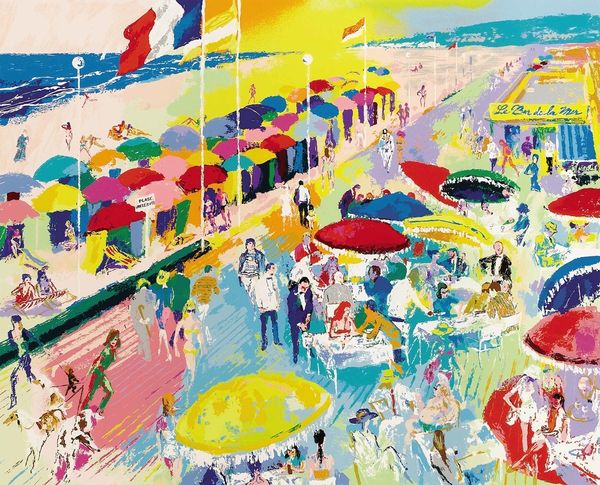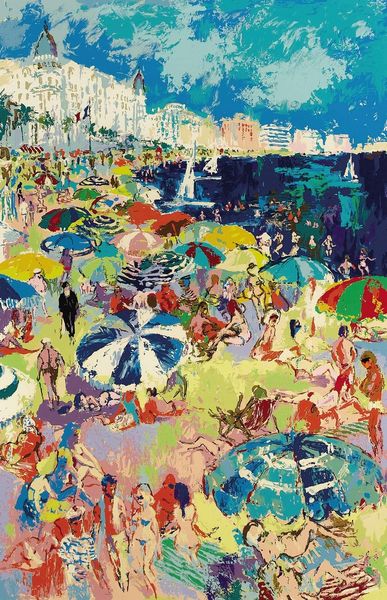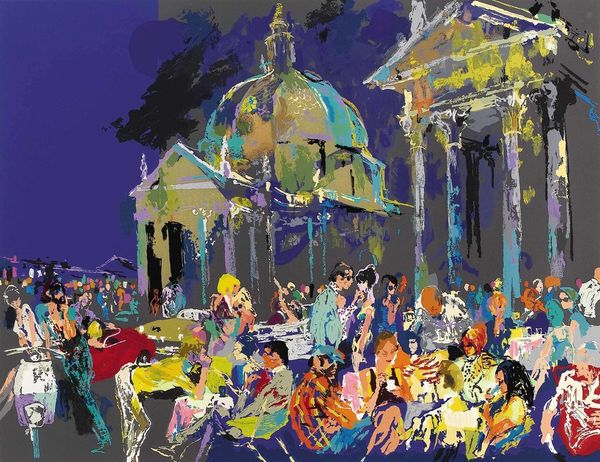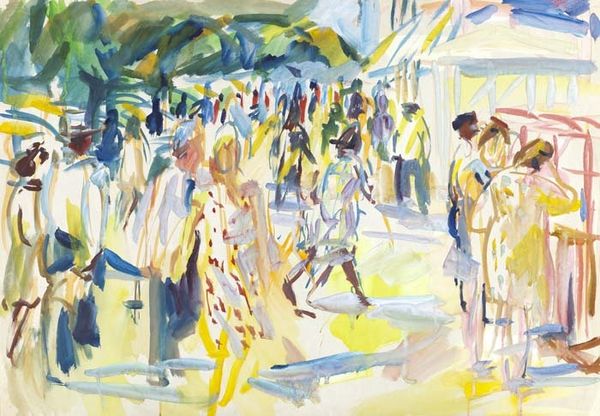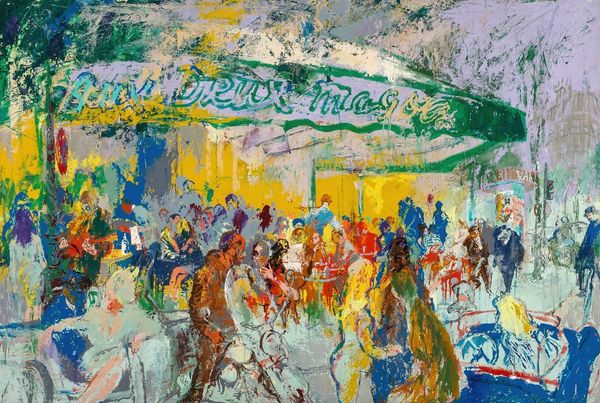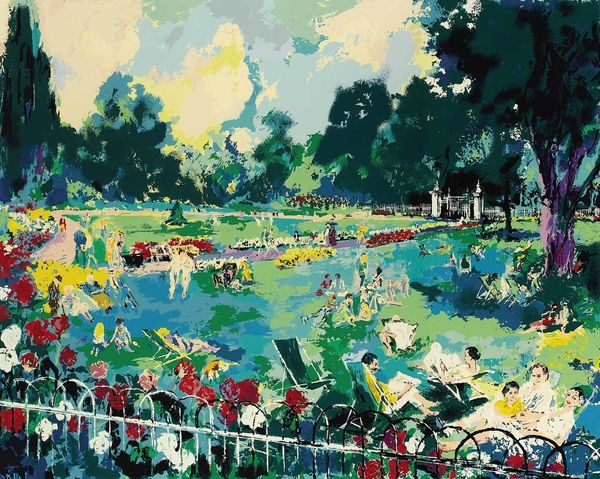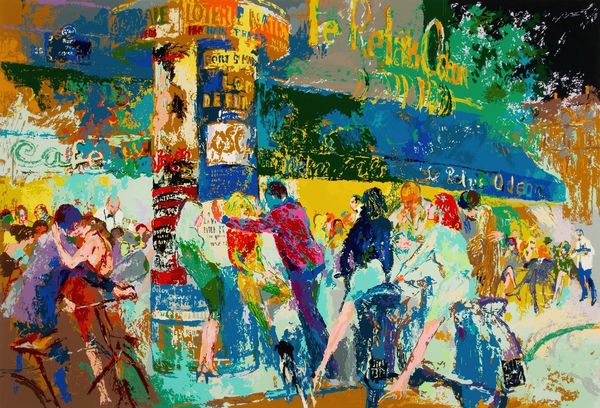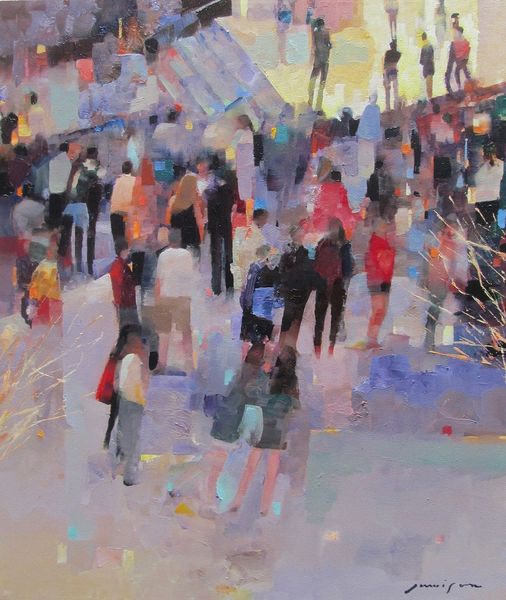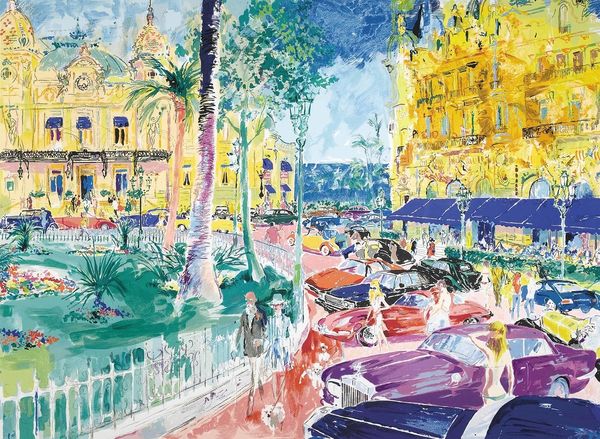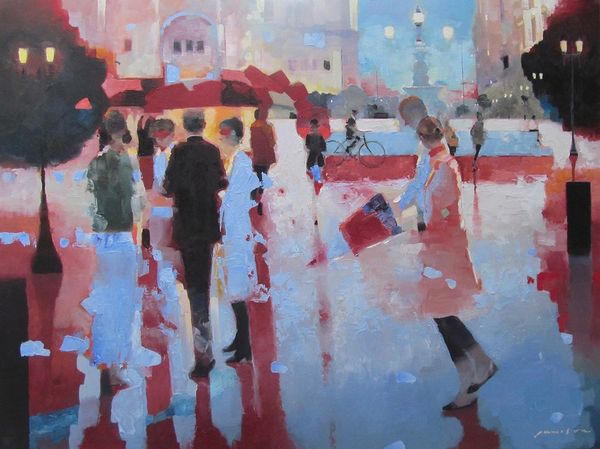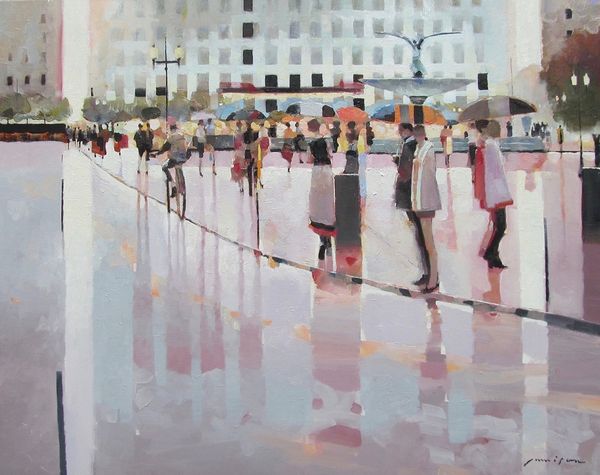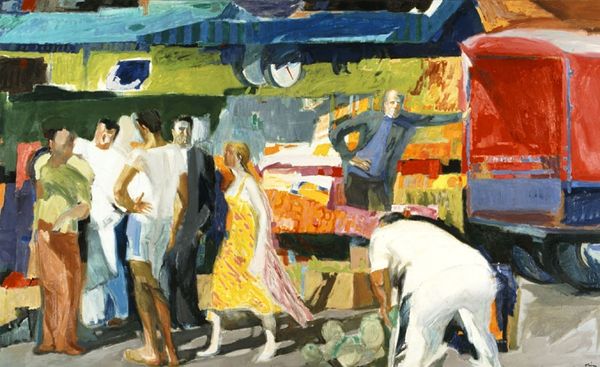
plein-air, acrylic-paint
#
fauvism
#
graffiti art
#
plein-air
#
acrylic-paint
#
acrylic on canvas
#
expressionism
#
cityscape
#
genre-painting
#
post-impressionism
Copyright: Modern Artists: Artvee
Curator: We're looking at LeRoy Neiman's "Fouquet’s Café", a scene rendered with vibrant acrylic paint that captures the effervescence of Parisian life. Editor: My initial thought? Electric. The color just explodes off the canvas, almost chaotic, yet you can sense the relaxed rhythm of the city. It looks like he captured a moment in time en plein air. Curator: Neiman often depicted leisure and spectacle, and this work encapsulates the appeal of the café society. Fouquet's, a historical establishment, served as a meeting place for artists, writers, and actors, and Neiman documents a crucial aspect of its cultural position. Editor: Exactly. And observe how he employs color: intense blues in contrast with bold reds and greens. Notice the quick, gestural brushstrokes suggesting immediacy. The material itself seems almost hastily applied. Was this a quick study? An initial layer to build upon? Curator: It’s representative of Neiman’s expressionistic style. The bold color palette pushes it towards fauvism. It also mirrors a societal shift of a more leisure culture as access to pleasure expanded and urban environments attracted people from a wider range of social statuses to engage and spend. Editor: Absolutely. It is amazing the variety of characters that inhabit this vibrant moment of post-war paris. I'm drawn to the texture and layering of paint. It gives the impression of frenetic movement— the waiters bustling, people chatting. Look at that almost careless application; he seems unconcerned with polished realism. Curator: Right. It reflects the attitude that the role of painting at this point had changed irrevocably after photography, it was now less of recording, and more of portraying affect. His works celebrate public life, hinting at broader socio-cultural transformations of that time. Editor: It makes you wonder about his process. The visible strokes show evidence of the making, almost as important as the subject depicted itself. I admire how Neiman rejected formal restrictions and captured pure energy of the scene using readily available materials like quick-drying acrylics. Curator: Studying this artwork prompts one to appreciate the café’s enduring role in public cultural discourse, and how painters reflect society's ever-shifting understanding of itself through places that give us community. Editor: Agreed. By focusing on material presence and technique, we reveal so much more about Neiman’s interpretation, and about the cultural significance of mundane scenarios in turn.
Comments
No comments
Be the first to comment and join the conversation on the ultimate creative platform.

